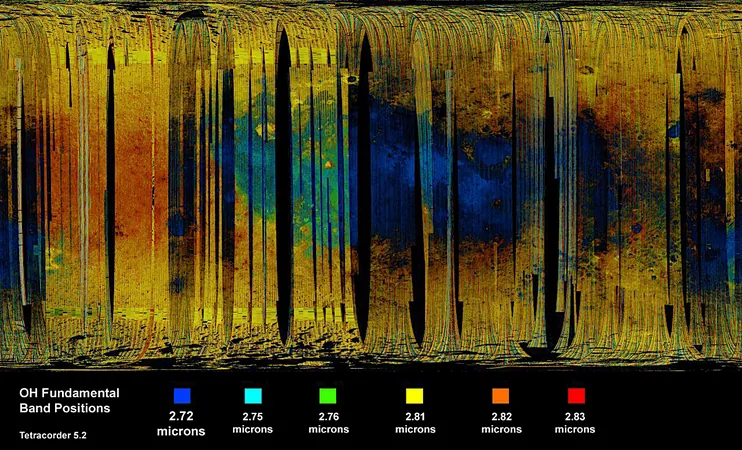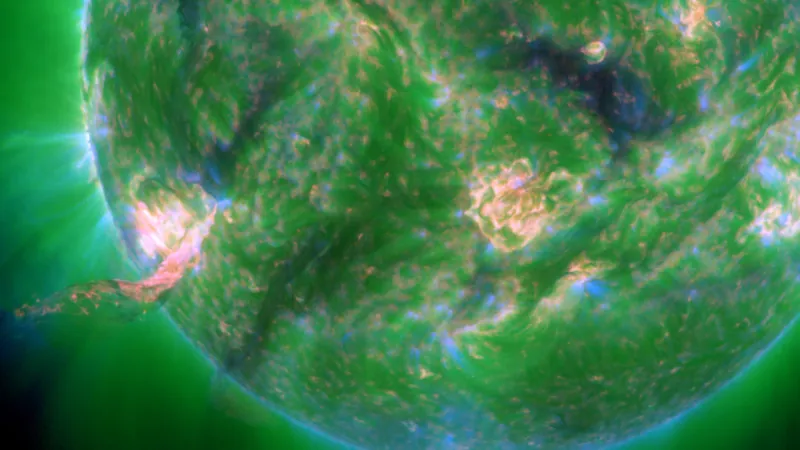
Shocking New Evidence of Early Black Holes Found by Hubble!
2024-09-22
Shocking New Evidence of Early Black Holes Found by Hubble!
In a groundbreaking discovery, scientists using NASA’s Hubble Space Telescope have revealed an astonishing number of black holes emerging in the aftermath of the Big Bang. These enigmatic cosmic entities, known for their powerful gravitational fields that even light cannot escape, have always intrigued astronomers and cosmologists alike.
An esteemed international team, led by researchers from Stockholm University, has made the remarkable finding that the universe hosted far more black holes in its infancy than previously anticipated. This revelation could drastically reshape our understanding of the formation of supermassive black holes during the early epochs of the cosmos.
The Birth of Supermassive Black Holes
The researchers embarked on this ambitious project to explore the uncharted territories of the universe, uncovering the secrets surrounding black holes' origins and development. Their study suggests that numerous supermassive black holes, each potentially over a billion times the mass of our Sun, existed within galaxies less than a billion years post-Big Bang. This challenges existing models regarding the timing and conditions necessary for such massive entities to arise.
Co-author Alice Young from Stockholm University commented, "Many of these black holes appear to be more massive than we originally thought possible at such early times. They either formed with immense mass or underwent rapid growth."
What Happened Right After the Big Bang?
In the chaotic aftermath of the Big Bang, the universe was characterized by extreme heat and density. As the primordial matter cooled, the first massive stars, known as Population III stars, began to form. These colossal stars, significantly larger than those we see today, ultimately exploded, giving rise to the initial black holes.
Subsequent black holes potentially grew enormous through mechanisms like gas accretion and mergers with their peers, leading to the supermassive black holes that power quasars—enigmatic, highly luminous cores of galaxies.
Astoundingly, the existence of quasars dating back approximately 13 billion years indicates that some black holes had already amassed millions to billions of solar masses shortly after the universe's birth.
Decoding the Mystery of Black Holes
The team conducted an extensive survey of faint galaxies from the universe’s infancy, noticing fluctuations in brightness indicative of black hole activity. Traditional techniques had fallen short in uncovering these elusive dark giants, but the innovative methods employed by the Stockholm researchers proved far more effective.
Their findings bolster the claim that some black holes may have originated from the collapse of massive, pristine stars during the early stages of the universe—stars that emerged long before the remnants of earlier generations contaminated the cosmic landscape.
Further Insights and Future Exploration
Speculations about black hole formation diversify, including theories of collapsing gas clouds and primordial black holes forming in the Big Bang's initial moments. The new insights into black holes are essential for developing more accurate models of galaxy formation and evolution.
Lead author Matthew Hayes emphasized, "Understanding how early black holes formed is pivotal in piecing together the puzzle of galaxy evolution. Accurate models for black hole growth will refine galaxy formation calculations."
Looking ahead, astronomers are eager to engage with advanced telescopes like the James Webb Space Telescope to explore and understand the characteristics of black holes that materialized shortly after the Big Bang. This next generation of astronomical tools promises to deepen our knowledge about the role black holes play in shaping galaxies, thus unraveling the secrets of the universe.
Stay tuned, as this exciting discovery opens up new frontiers in cosmology, revealing just how pivotal black holes are in the grand cosmic narrative!





 Brasil (PT)
Brasil (PT)
 Canada (EN)
Canada (EN)
 Chile (ES)
Chile (ES)
 España (ES)
España (ES)
 France (FR)
France (FR)
 Hong Kong (EN)
Hong Kong (EN)
 Italia (IT)
Italia (IT)
 日本 (JA)
日本 (JA)
 Magyarország (HU)
Magyarország (HU)
 Norge (NO)
Norge (NO)
 Polska (PL)
Polska (PL)
 Schweiz (DE)
Schweiz (DE)
 Singapore (EN)
Singapore (EN)
 Sverige (SV)
Sverige (SV)
 Suomi (FI)
Suomi (FI)
 Türkiye (TR)
Türkiye (TR)